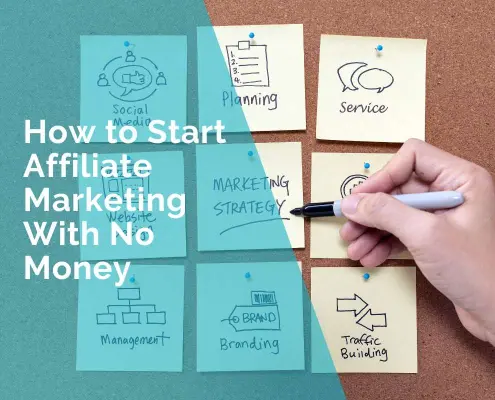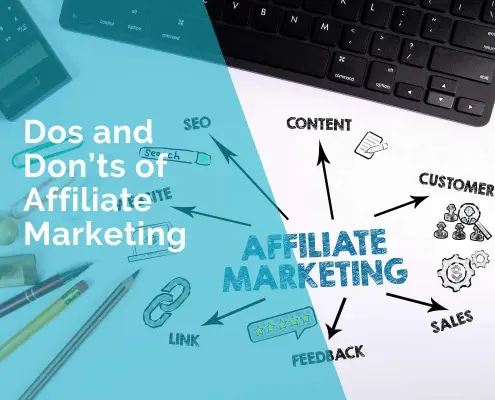7 Often Overlooked Costs of eCommerce Business Development
In the age of online shopping, starting an eCommerce business can be a thrilling experience and one that offers the promise of reaching customers on a global scale. However, the path to online success is also laced with unseen expenses that often catch new digital entrepreneurs off guard.
While it’s easy to focus on the upfront costs — like creating a killer website, social media profiles, and sourcing in-demand products — there are quite a few hidden costs that can really impact your bottom line. Understanding these costs is crucial for proper budgeting and ensuring that in a crowded digital marketplace, your business not only survives but thrives.
Here is a detailed look at 7 hidden costs of eCommerce business development, shared by our team of web designers and eCommerce market experts.
1. Business Insurance: A Crucial Investment
When starting an eCommerce business, one of the first (and arguably the most important) things to consider is business insurance. It’s something that brand new business owners forget about all the time, and yet it could save your company from a range of risks from product liability, cyber attacks and more.
For example, say a customer claims that your product or service caused them harm. This is where business insurance comes in and helps to pay for both the legal fees or costs of damages. Similarly, with data breaches and cyber-attacks becoming more and more common, cyber liability insurance can literally be the difference in making or breaking your business.
The cost of business insurance will depend on the industry you operate in, how big your company is and what type of coverage you choose. Sure, business insurance cover adds another expense to your operation but it can also protect you and give you peace of mind. At the risk of being called out on a no-brainer, protection is not optional — it’s necessary to keep everything that you have worked so hard for.
2. Web hosting and Site Design: More Than Just Initial Costs
Your eCommerce website is literally the heart of everything you do on your online business — it’s the equivalent of your storefront at a shopping centre, but online, so you’ll want to spend some money getting reliable web hosting services and quality design. However, maintaining your e-Commerce website goes beyond just these initial start-up costs.
When it comes to web hosting, upgrades for increased bandwidth, better security features, and scalability options can add to your expenses over time. This is why it pays to pick a plan that will grow with you — so you don’t have to upgrade every year and shell out more money than anticipated.
Shopify, and WooCommerce also have various pricing plans but bear in mind the hidden costs like transaction fees. Shopify, for example, charges you a transaction fee of 2.9%+30 cents on every sale. You will probably take a hit to your margins with these fees so factor them into your pricing.
Professional site design is another area where costs can quickly add up, but don’t get us wrong — a well designed website can make or break your online business. A good eCommerce website should look professional, be functional and easy to navigate. However, ongoing updates and maintenance are also necessary to keep your site fresh and functional, adding to the overall cost.
3. Warehousing: Managing Your Inventory
Another cannot ignore costs that frequently surprise eCommerce businesses is warehousing. If you rent a warehouse (or use a third-party fulfilment service), ongoing costs are required to store and manage your inventory. Similarly, if using a fulfilment service like Fulfilment by Amazon (FBA), remember that storage and order handling fees will apply. While these services certainly make things simpler for you, it is crucial to understand the fee structure and how it affects your profit margins.
On the other hand, self-warehousing requires a different set of investments. You’ll need to secure a location, hire people and put inventory management in place. This gives you a lot more control over how your operations work, but it can also become very costly.
At the end of the day, it all comes down to what works for your business and how much you’re willing to spend. If you have a particular budget in mind, we highly recommend conducting some cost-benefit analysis for all the potential costs involved when considering your options.
4. Supplier Costs: Optimising Your Profit Margins
Dealing with suppliers is part and parcel of running any business. But working with suppliers involves way more than just paying for the products you order. Often, there are additional costs such as minimum order quantities, transportation costs, and price fluctuations due to the market. This is obviously problematic for business owners trying to keep their profit margins.
For instance, if you do not meet a minimum order requirement or need expedited shipping this might cost you more.
Additionally, variable raw material costs can also affect your pricing and profit margins. Knowing these variables and getting ahead of them helps you have a better handle on your own supply chain costs, and can decrease the odds that suppliers are playing games with their prices.
It’s also a good idea to maintain good relationships with suppliers, as strong partnerships can sometimes lead to more favourable terms, better pricing, and more flexibility.
Establishing these ties may result in stability, and transition you more gracefully through cost fluctuations. Great methods for maintaining supplier relationships include staying proactive with supplier communications and maintaining your loyalty as a customer (i.e. looking into diversification opportunities with your suppliers).
5. Shipping & Postage: Your Key To Wider Markets
For any eCommerce business, shipping is a major element. But remember — it’s not just about postage fees for getting products to your customers. You also need to consider the costs of packaging and handling, and any transaction fees or order processing fees involved with making orders through your website.
Order processing fees are one of those operational small business costs you never think to add up – but when you do, you’ll realise just how much those figures cut into your profit margins. If you’re using payment services that do charge order processing fees, then make sure these fees are considered when you set not only your product prices, but also your fee models for shipping and handling.
But what about those free shipping incentives? Offering free shipping for orders over a set dollar value is undeniably one of the easiest ways to attract additional traffic and generate more sales, but make sure you have a limit based on your budget. You may cover the cost of shipping (i.e., rolled into product price), or set a minimum spend for free delivery. Moreover, if you can find efficient/cheaper shipping logistics and options in your area this will benefit the customer as well.
By finding the best delivery prices and optimising your packaging with lower costs, fine tuning these basic shipping and handling processes is foundational to the profitability and scalability of your eCommerce enterprise.
6. Packaging: Enhancing the Customer Experience
Let’s be real — packaging might seem like a trivial matter, but it can without a doubt be instrumental in determining the overall customer experience. Great packaging not only keeps your products safe during shipping but also adds a touch of excitement to the unboxing moment. Sophisticated packaging makes your brand feel super legit and creates a memorable first impression on your customers.
Packaging, however, is not free. Shipping boxes, bubble wrap, honeycomb paper, tissue paper, the dollars can easily add up. Nevertheless, it is in all honesty worth it. It positions your products apart from the competition and keeps customers coming back for more. Plus, with more and more focus on sustainability these days, choosing eco-friendly packaging (compostable mailers, BioFill etc) can be a big win, even if it does cost you a tad bit more.
7. Digital Marketing: Driving Traffic and Sales
In terms of driving traffic to your eCommerce site and turning over sales, digital marketing is that one true friend. But we’ve got to be honest: without a clear-cut strategy in place, digital marketing efforts for eCommerce can get pretty pricey! Advertising on big names like Google, Facebook, and Instagram isn’t just about the ad spend — you’re also looking at costs for creating ads, managing campaigns, and keeping an eye on your analytics.
Spending money on short term ad campaigns can definitely get you some quick traffic and sales, but don’t forget about the long game. This is where SEO and content marketing can make a huge difference. SEO gets your site ranking on search engines like Google which is basically free advertising in comparison to paid ad campaigns. Boosting your website’s visibility in these ‘organic’ traffic channels can be a great method for driving visitors to your domain. And once they’re on your site, your designed customer journey should be able to turn those visitors into converted customers.
And much like organic search marketing, building up your brand on social media can also be a great way to create a buzz around your business. As social media marketing allows for direct communications with your consumer base, building a digital presence that aligns with your branding guidelines and aids in strengthening consumer relationships can help effortlessly elevate your eCommerce business to the point where you may even be able to build up a cult following.
Just remember: smart, realistic budgeting and regularly tweaking your marketing game plan will help you get the most bang for your buck and keep those sales rolling in.
At the end of the day, running an eCommerce business involves WAY more than just a great product and a slick website. It’s all about managing those hidden costs and finding smart ways to keep everything running smoothly without breaking the bank..
With the right strategies and a bit of creativity, you’ll be well on your way to turning your site visitors into paying customers and growing the profit margins of your eCommerce venture.
***
Janis Frost












